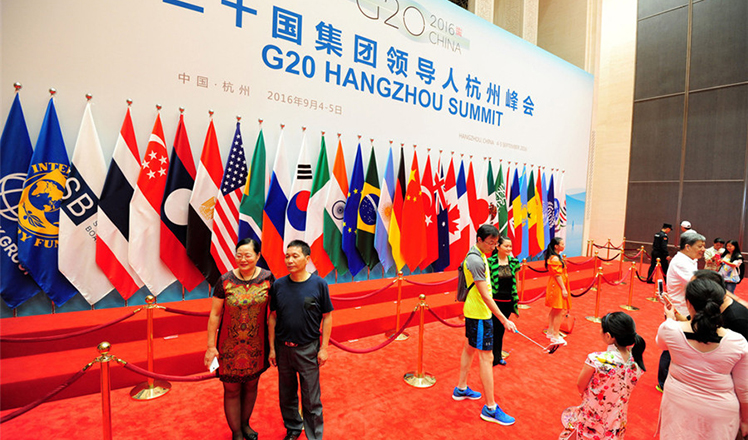US, China urged to collaborate on new energy
Updated: 2016-09-22 12:42
By Lia Zhu in San Francisco(China Daily USA)
|
||||||||
The United States and China,the world's two largest greenhouse gas emitters, have the economic might to develop new energy technologies,said Steven Chu, former US secretary of energy.
Chu spoke at the USChina New Energy Economy Forum on Wednesday in San Francisco,which attracted scoresof experts and entrepreneurs in the energy sector from both countries.
He told the forum that three quarters of the greenhouse gas emissions occurred in the last 65 years and that the world is facing serious climate issues - the global temperature has increased, and glaciers are melting.
A6 - to 9-meter rise in sea levels will likely create 500 to 700 million worldwide climate refugees, and tens of millions of people would be displaced in the Shanghai area alone, said Chu, a professor of physics and of molecular and cellular physiology at the Stanford University Medical School.
In Beijing and other cities in China, air pollution has reached dangerous levels that could lead to an increase in lung cancers, he said.
The solution is to transition from traditional fossil fuel energy to renewable energy, primarily wind, water and solar, Chu said.
Ahead of the G20 Summit in Hangzhou earlier this month,China and the US formally committed to joining last year's Paris Agreement on climate change.
China pledged to peak carbon emissions by 2030, while the US pledged to cut emissions by 28 percent by 2025 compared with the level in 2005.
"In the last three years, China appears more committed to the major climate agreements with the US," said Hillard Huntington,executive director of Stanford's Energy Modeling Forum. "China is shifting towards a low-carbon economic future at the central,provincial and local levels of government."
But "one size may not fit all",said Huntington. "Provinces and industries may need to have different targets."
He said regional interests could complicate any universal agreement to limit emissions, as uniform reductions across regions will increase China's costs because high-cost areas will be asked to match the efforts of low-cost regions.
"If targets are greater in some areas but minimal in others, 'leakage'may emerge," he explained.
liazhu@chinadailyusa.com
- Renminbi use surges in London in spite of Brexit
- UN Security Council holds urgent meeting on Syria
- Confucius Institute US Center celebrates achievers
- DPRK holds Wonsan Intl Friendship Air Festival
- Car-crazy Mexico City celebrates World Carfree Day
- Death toll rises to 52 after migrant boat capsizes off Egypt

 Classic autos debut at Beijing Design Week
Classic autos debut at Beijing Design Week
 World in photos: Sept 19 - 25
World in photos: Sept 19 - 25
 Milan Fashion Week: Dolce & Gabbana Spring/Summer 2017
Milan Fashion Week: Dolce & Gabbana Spring/Summer 2017
 Hangzhou opens G20 summit arena to general public
Hangzhou opens G20 summit arena to general public
 Li, Trudeau inaugurate 'new annual dialogue'
Li, Trudeau inaugurate 'new annual dialogue'
 Milan Fashion Week: Prada Spring/Summer 2017
Milan Fashion Week: Prada Spring/Summer 2017
 Panchen Lama prayers at foot of Qomolangma
Panchen Lama prayers at foot of Qomolangma
 Ai Fukuhara and her newlywed husband show up in Taiwan
Ai Fukuhara and her newlywed husband show up in Taiwan
Most Viewed
Editor's Picks

|

|

|

|

|

|
Today's Top News
Trump outlines anti-terror plan, proposing extreme vetting for immigrants
Phelps puts spotlight on cupping
US launches airstrikes against IS targets in Libya's Sirte
Ministry slams US-Korean THAAD deployment
Two police officers shot at protest in Dallas
Abe's blame game reveals his policies failing to get results
Ending wildlife trafficking must be policy priority in Asia
Effects of supply-side reform take time to be seen
US Weekly

|

|








